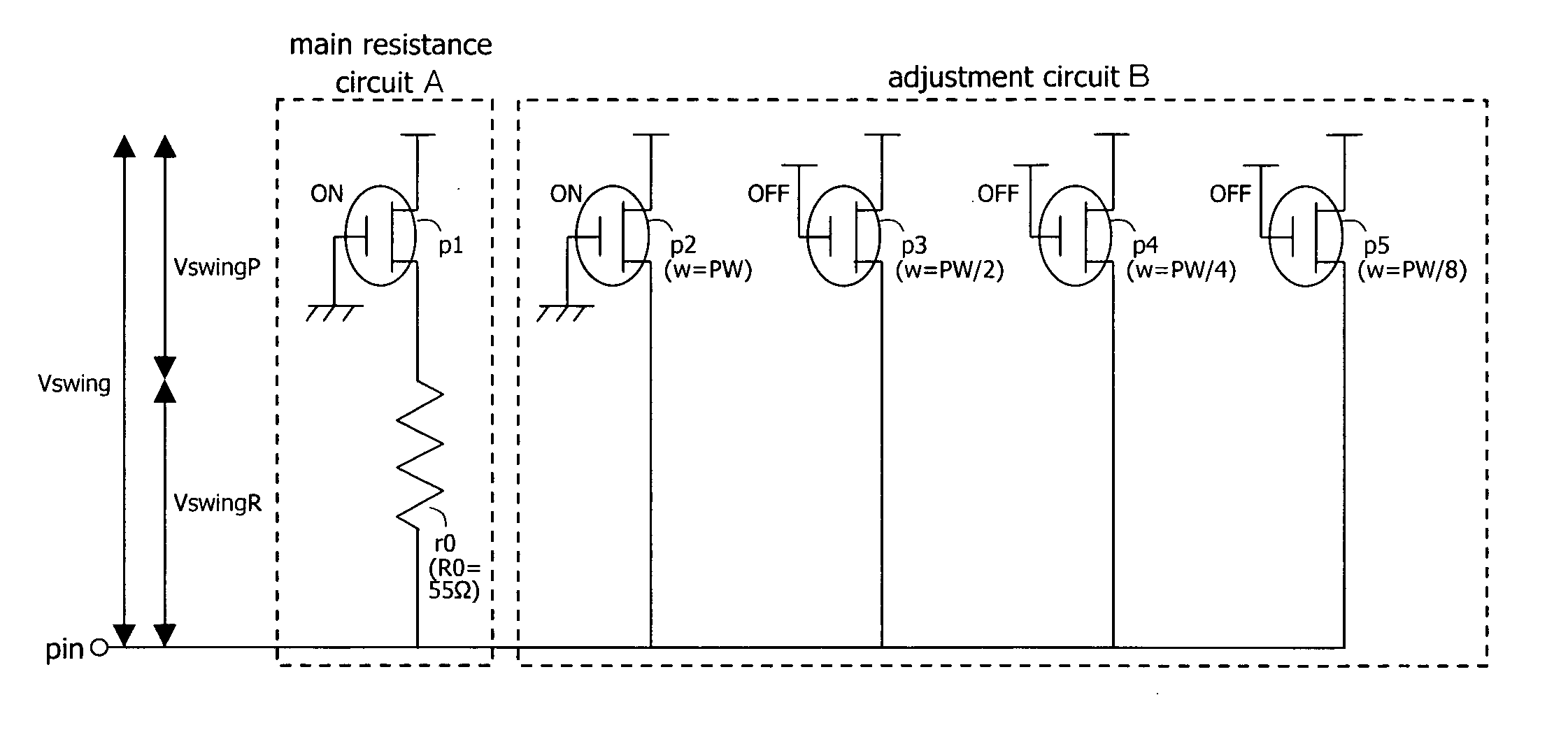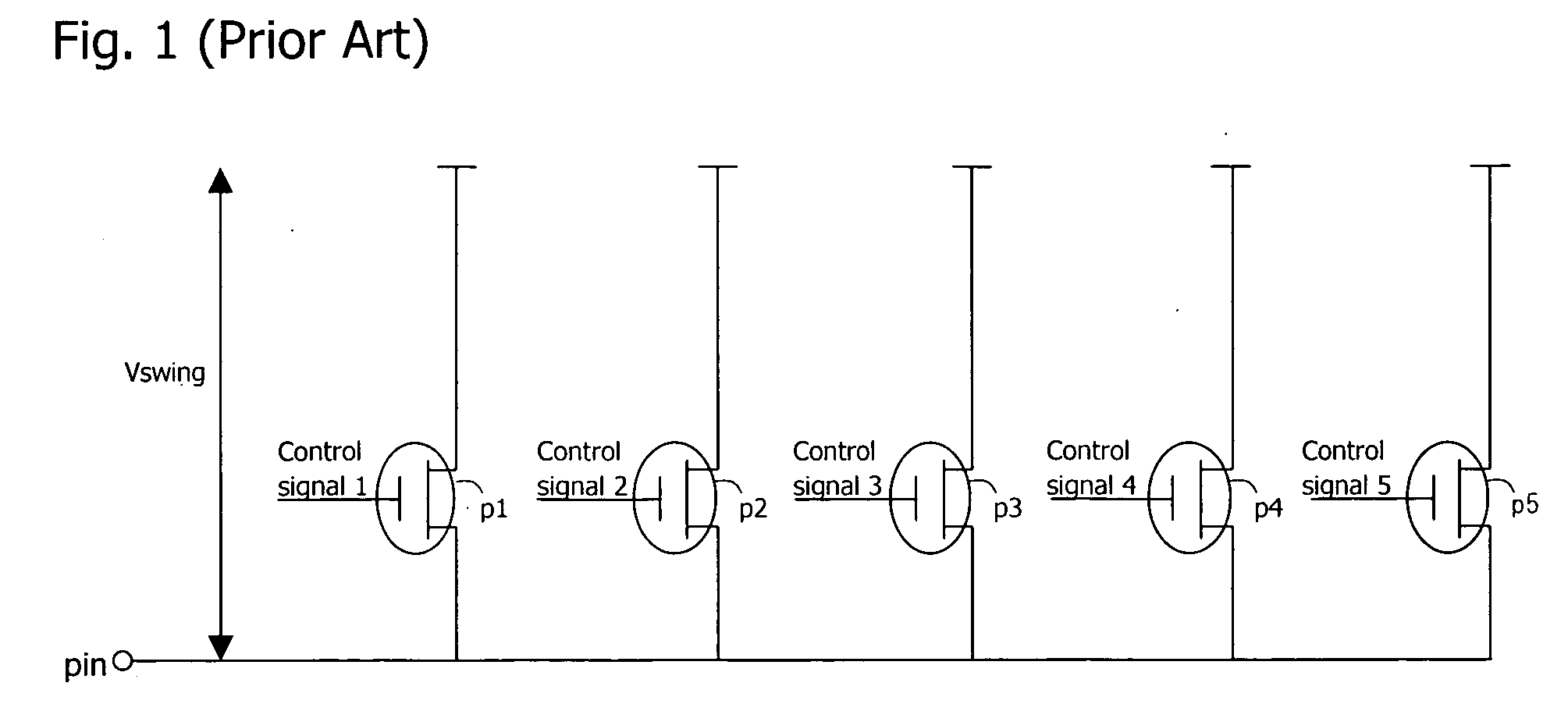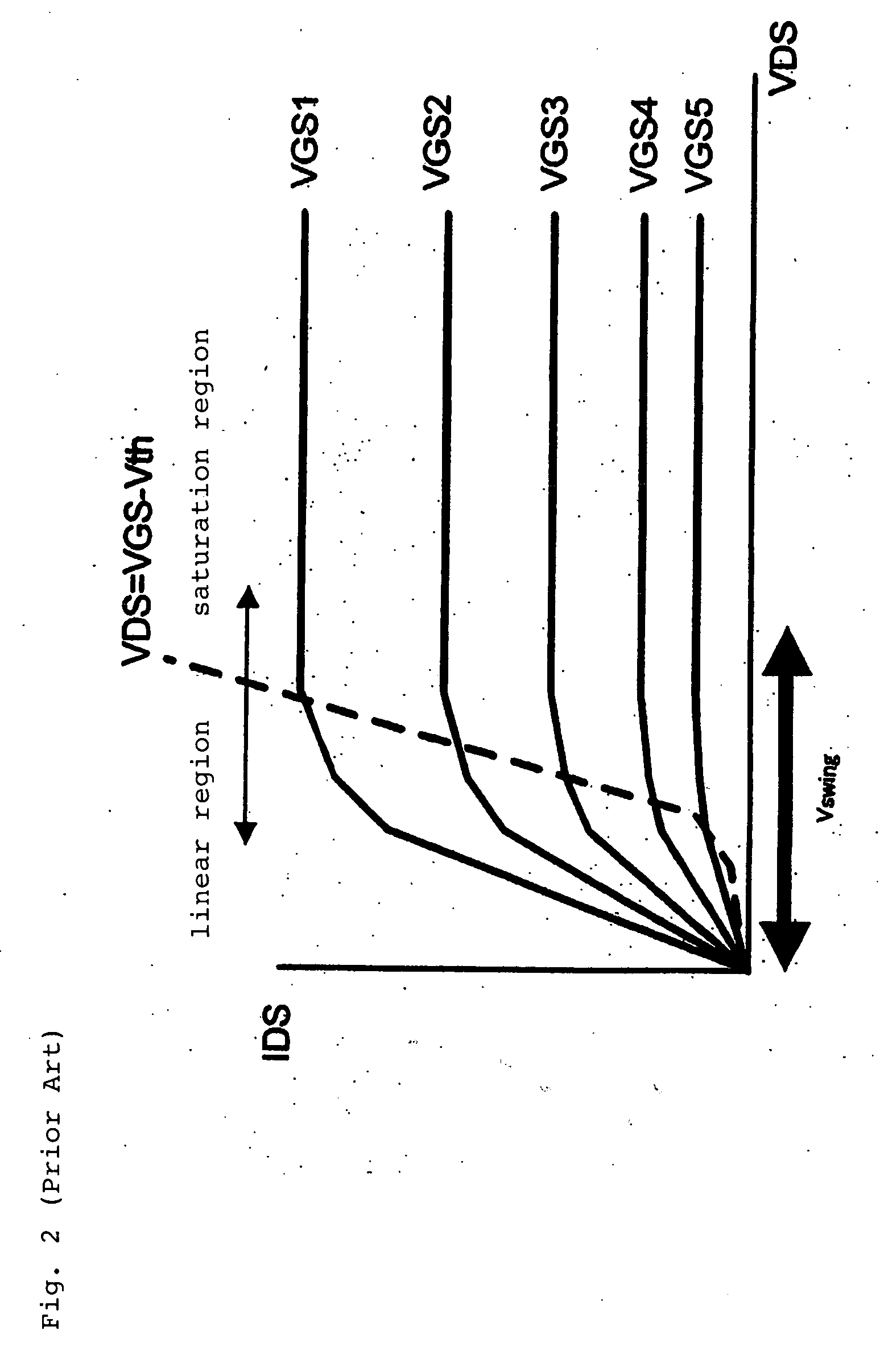Adjustment of termination resistance in an on-die termination circuit
a termination circuit and resistance technology, applied in the field of on-die termination circuits, can solve the problems of nonlinear change of resistance, circuit suffers, impedance varies widely according to the situation, etc., and achieve the effect of suppressing the fluctuation of termination resistan
- Summary
- Abstract
- Description
- Claims
- Application Information
AI Technical Summary
Benefits of technology
Problems solved by technology
Method used
Image
Examples
first embodiment
[0078]FIGS. 10A and 11A show the configuration of the on-die termination circuit of the first embodiment of the present invention. Although the circuit configuration itself is identical in FIGS. 10A and 11A, the transistors that are ON during the adjustment of termination resistance are different. FIG. 10B shows an equivalent circuit diagram in which FIG. 10A is represented by resistance elements and capacitance elements, and FIG. 11B shows an equivalent circuit diagram in which FIG. 11A is represented by resistance elements and capacitance elements.
[0079] As shown in FIGS. 10A and 11A, the on-die termination circuit of the present embodiment includes: main resistance circuit A made up from transistor p1, which is a PMOS transistor, and resistance element r0; and adjustment circuit B which is made up from transistors p2˜p5, which are PMOS transistors, transistors p2˜p5 being both connected together in parallel and connected in parallel to main resistance circuit A.
[0080] One termi...
second embodiment
[0115]FIG. 13 shows the configuration of the on-die termination circuit of the second embodiment of the present invention.
[0116] As shown in FIG. 13, the on-die termination circuit of this embodiment differs from the first embodiment in that the termination voltage is changed from the power supply voltage VDD to GND, and transistors p1˜p5 are changed to transistors n1˜n5, which are NMOS transistors.
[0117] The present embodiment is also assumed to be of a binary configuration. If the width w of transistor n2 is assumed to be NW, the width w of each of transistors n3, n4, and n5 is NW / 2, NW / 4, and NW / 8, respectively.
third embodiment
[0118]FIG. 14 shows the configuration of the on-die termination circuit of the third embodiment of the present invention.
[0119] As shown in FIG. 14, the on-die termination circuit of this embodiment is a device in which a circuit whose termination voltage is the power supply voltage VDD, as in the first embodiment, and a circuit whose termination voltage is GND, as in the second embodiment, are associated by sharing the terminal pin. The termination voltage can thus be set to ½ of the level of power supply voltage VDD.
[0120] In addition, this embodiment is also assumed to be of a binary configuration, but the relation of the widths w of transistors p1˜p5 is the same as in the first embodiment and the relation of the widths of transistors n1˜n5 is the same as in the second embodiment.
PUM
 Login to View More
Login to View More Abstract
Description
Claims
Application Information
 Login to View More
Login to View More - R&D
- Intellectual Property
- Life Sciences
- Materials
- Tech Scout
- Unparalleled Data Quality
- Higher Quality Content
- 60% Fewer Hallucinations
Browse by: Latest US Patents, China's latest patents, Technical Efficacy Thesaurus, Application Domain, Technology Topic, Popular Technical Reports.
© 2025 PatSnap. All rights reserved.Legal|Privacy policy|Modern Slavery Act Transparency Statement|Sitemap|About US| Contact US: help@patsnap.com



